How to structure your Green Office team: 3 options explained
A Green Office team can be set up in many different ways. Here are the 3 most common structures that student and staff Green Offices use.
Establishing a sustainability hub, based on the Green Office Model, can be a great way to boost sustainability at your university or college. But how do you set up your team? Three options have emerged over time: a student-led team with a staff contact, a joint team of students and staff, and separate student and staff teams.
What all Green Offices have in common, is that they involve both students and staff in their core teams, and unlike volunteer-led initiatives, they receive funding and an official mandate from their universities.
Option 1: a student-led Green Office team with a staff contact
When the very first Green Office team got started at Maastricht University in 2010, this was the original set-up that was used. It has now become rather the exception than the rule for Green Offices, but it does remain a great option in the right circumstances.
Strengths
- Affordable and cost-effective: A team of student employees can cost the university only around 30,000 Euros per year (in Western Europe). Arguably a team of 4-6 highly motivated young students, who in addition to that raw energy also get paid, can accomplish more than a single part-time university staff member (who would cost the institution roughly the same).
- Strong student leadership: Students are really in the driving seat and can bring innovative, out-of-the-box thinking to the table.
Risks
- Mismatch between responsibilities and capacity: The Green Office team largely has the same responsibilities as a fully-fletched, staff-led sustainability team – plus there is an expectation to engage students better than a staff team ever could. Yet the students don’t have the experience, working hours, financial resources or standing within the university to fully live up to these very high expectations.
Our recommendation
This is a great way for universities to kick-start their sustainability work if they are just getting started. If you have not dealt with sustainability at all yet and want to get started, but can only spend 20 – 60,000 Euros per year – this is model is a good choice for you!
Here are a few examples of Green Office teams that follow this approach (as of 2017):

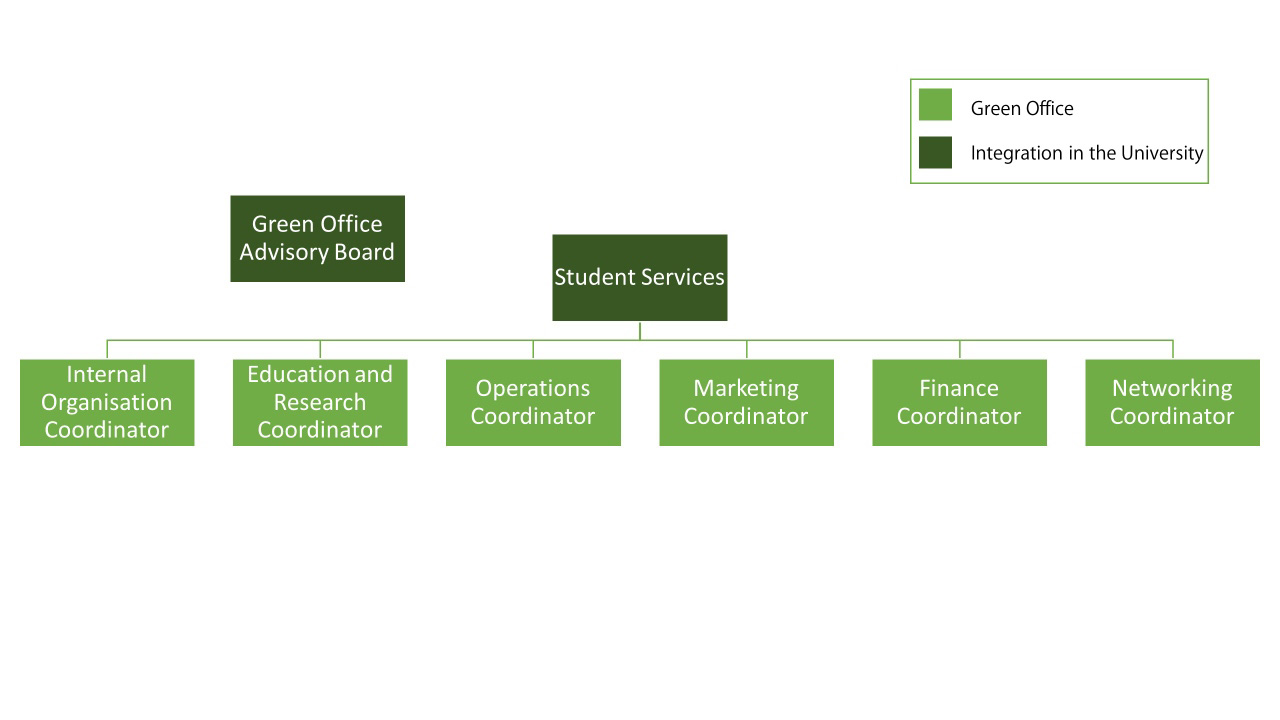
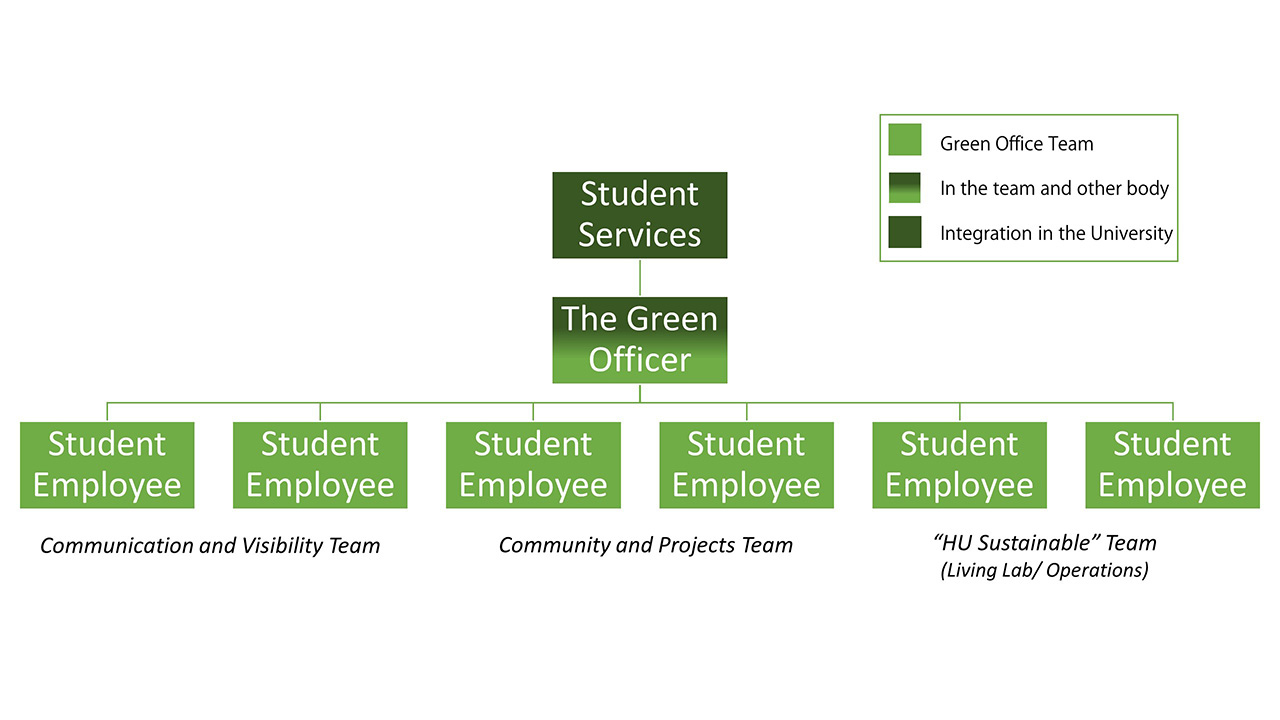
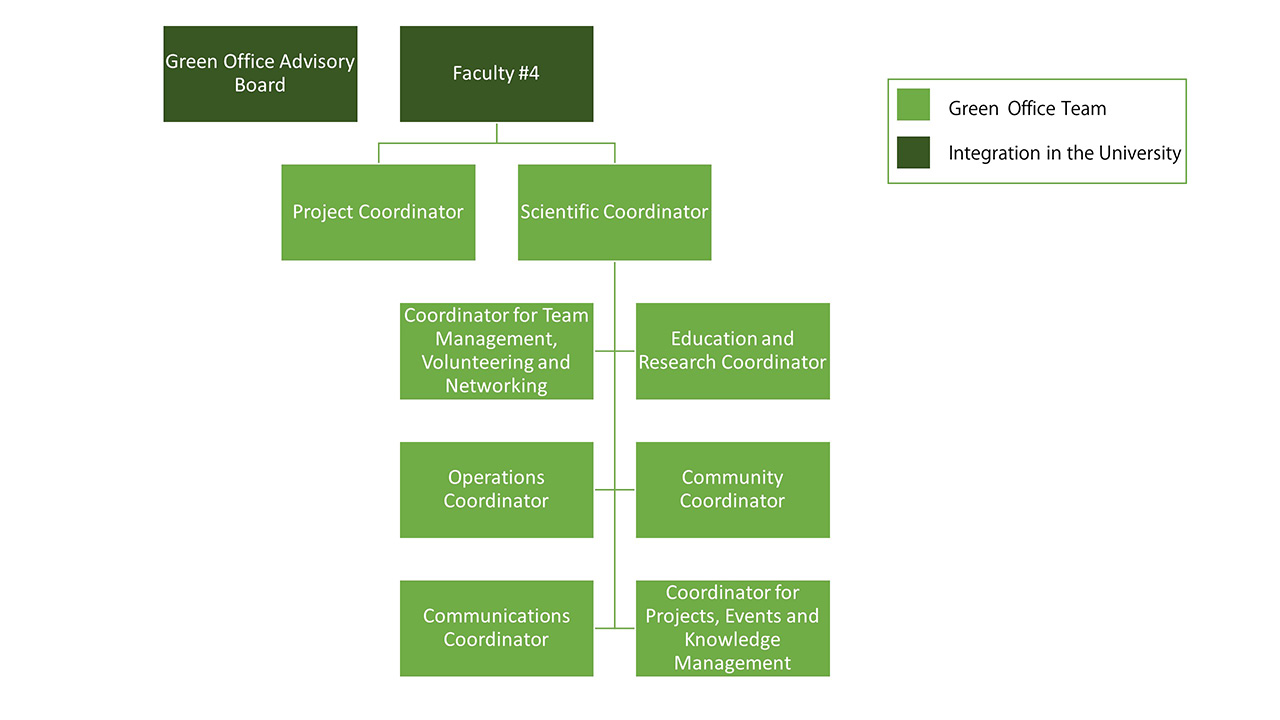


Option 2: a joint team of students and staff
Currently, most Green Offices are run by a team that includes both students and staff members. This can be set up on a smaller scale, with one university staff coordinator who manages the team and a number of student employees. If sufficient resources are available, you can also create a much larger team with several students and several staff members.
Benefits
- Strong collaboration: Students and staff collaborate closely in all Green Offices. However, with this specific structure, it becomes even easier to work together on individual projects, as students and staff are in the same team and may even sit in the same office.
- Covers all areas: Students and staff each have their own strengths and weaknesses. For example, students may be better at engaging other students and coming up with innovative ideas – while staff may have more expertise and experience. By having them all in one team, you can make great use of synergies.
Risks
- Loss of student ownership: A key benefit of the Green Office Model is that it empowers students to lead on sustainability. With staff in the team, formal and informal hierarchies may lead to students having less influence and independence, as compared to the other two options (though students still have significantly more influence than in traditional governance structures).
Our recommendation
This is a great way for universities to kick-start or further increase the capacity of their sustainability work. If you have not dealt with sustainability at all yet and want to get started with a medium-sized sustainability team, this option can work very well for you! Alternatively, you can also use it as a structure for a large sustainability programme, with multiple students and staff members. In that case, you need to decide whether you prefer a joint team or two separate teams as described below.
Here are a few examples of Green Office teams that follow this approach (as of 2017):

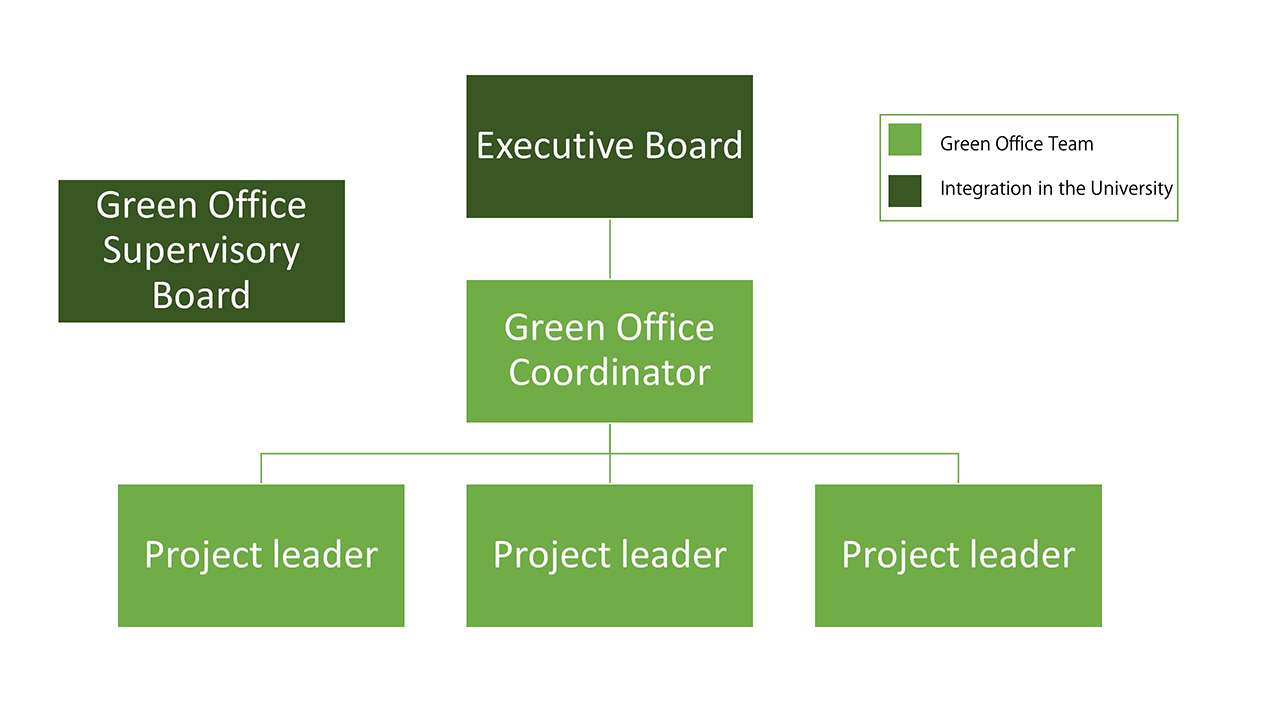

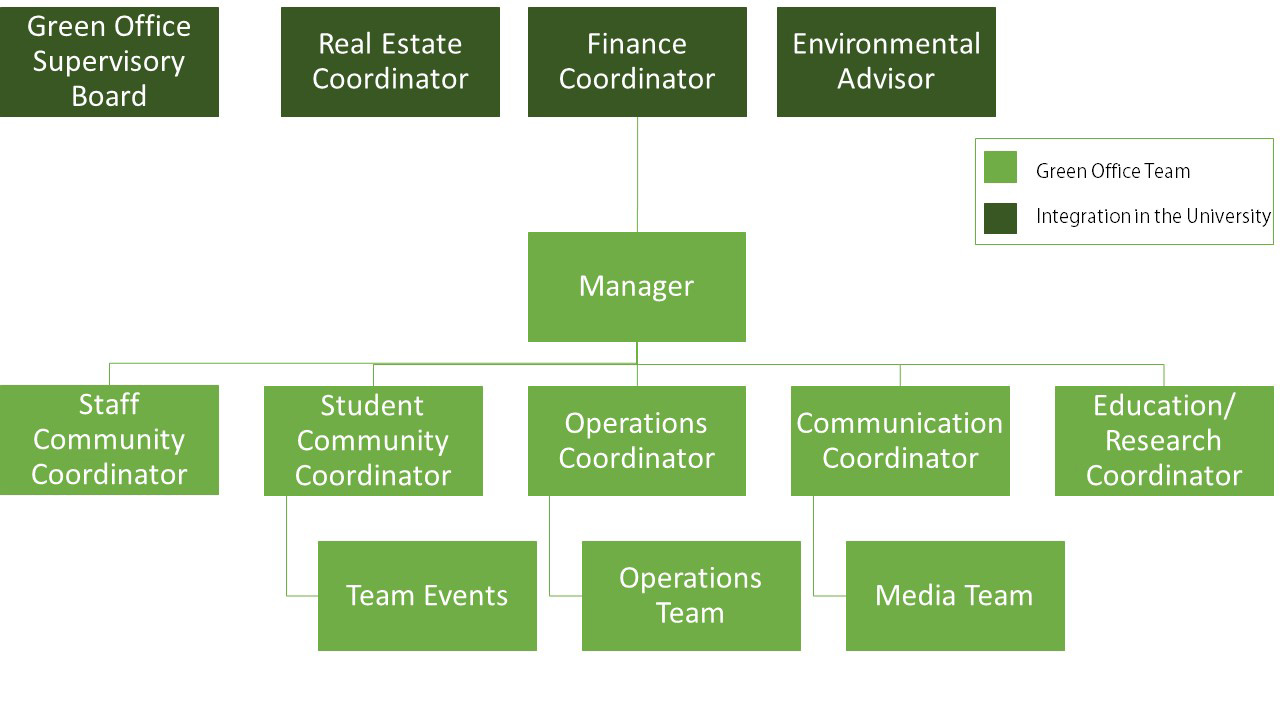
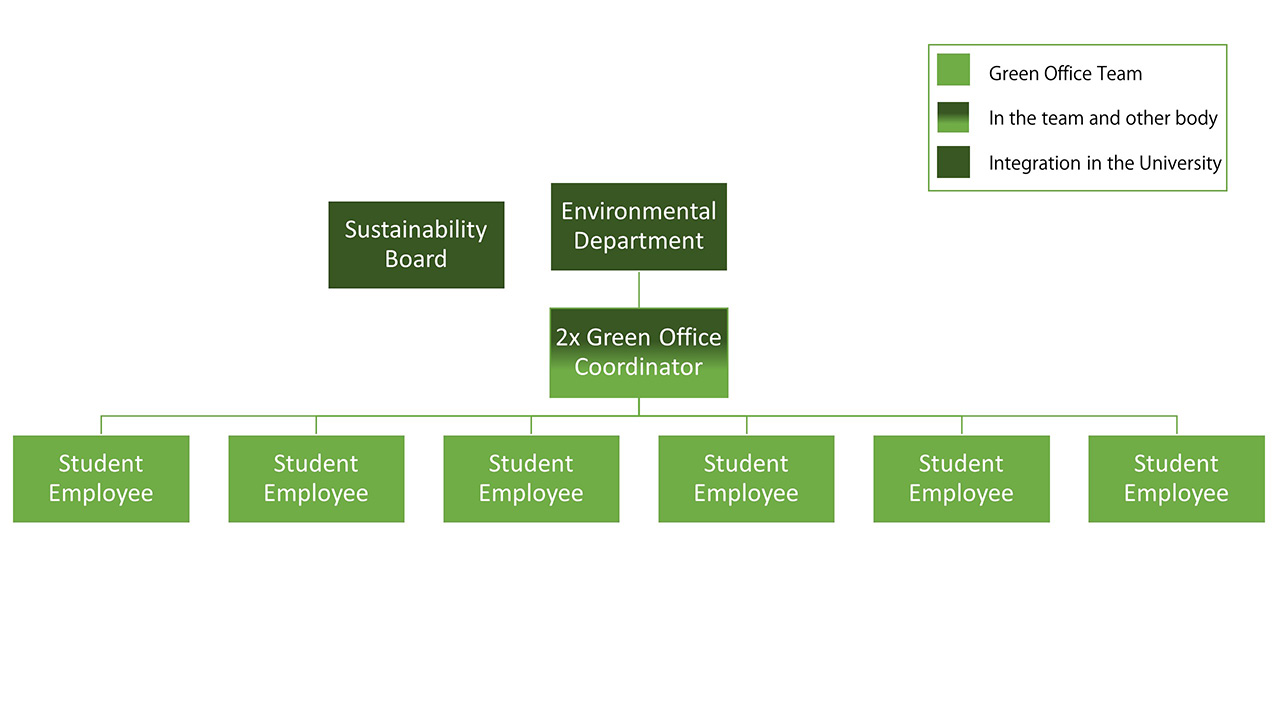
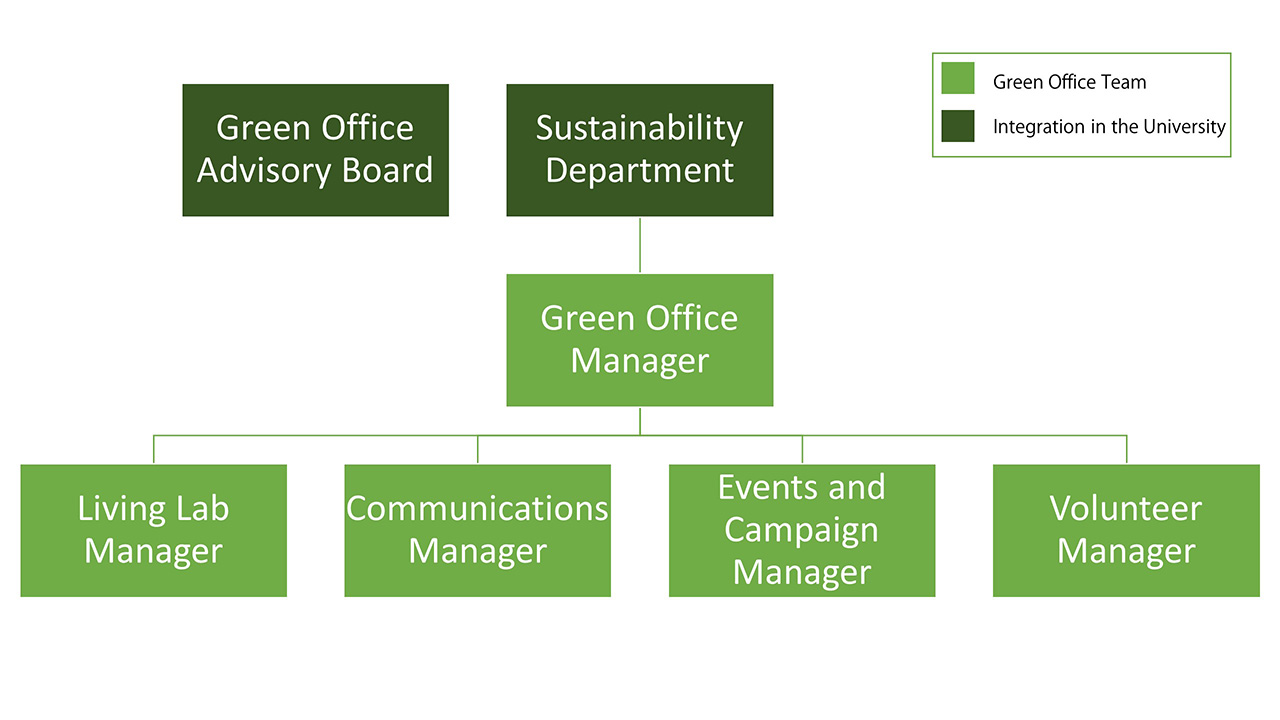
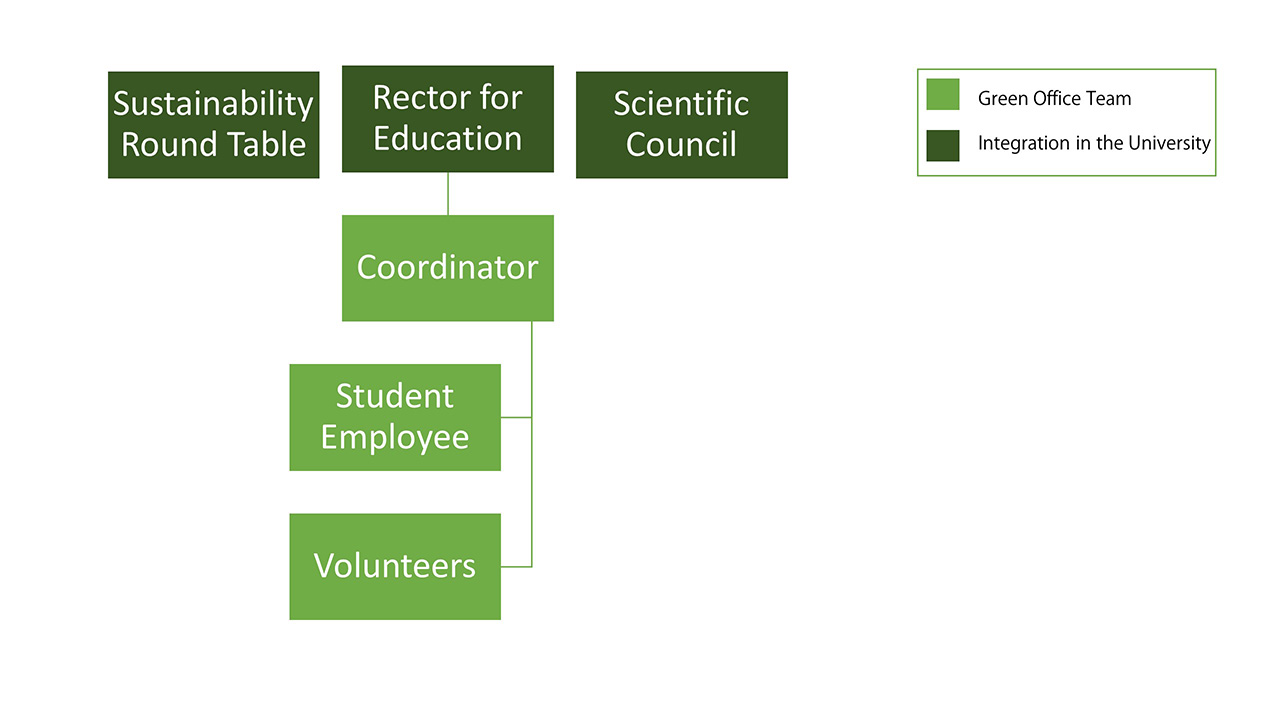
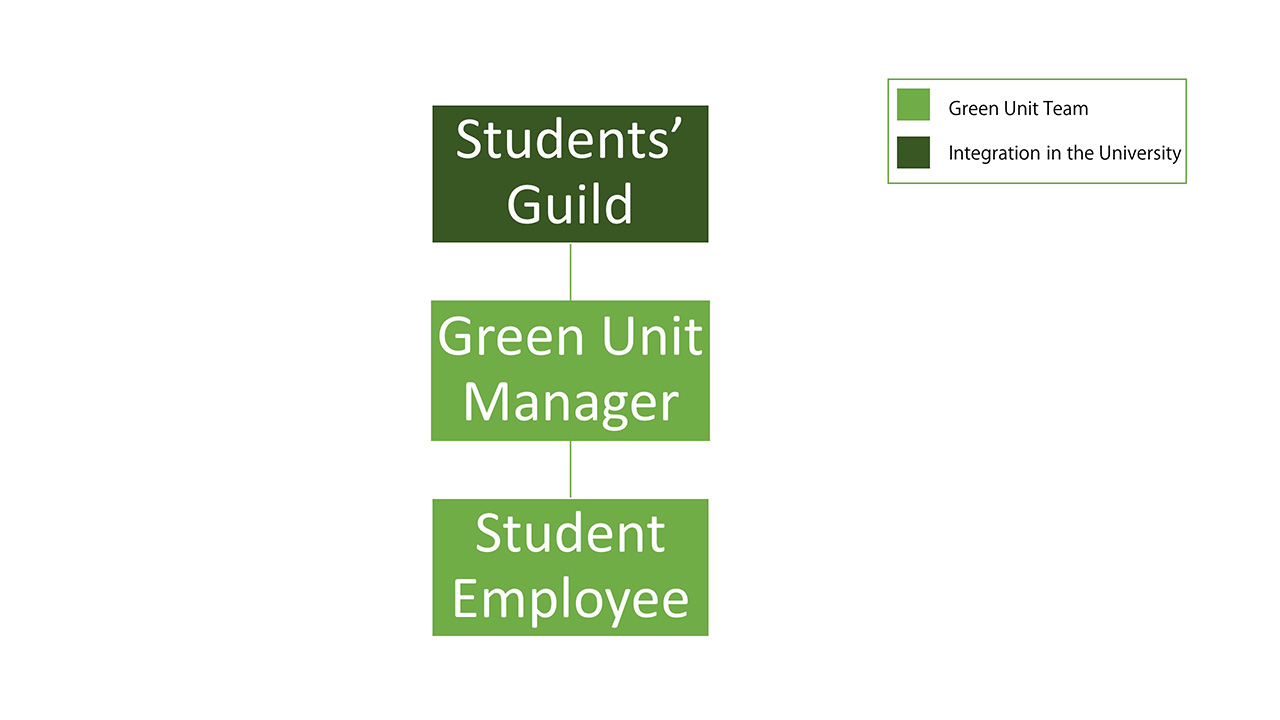

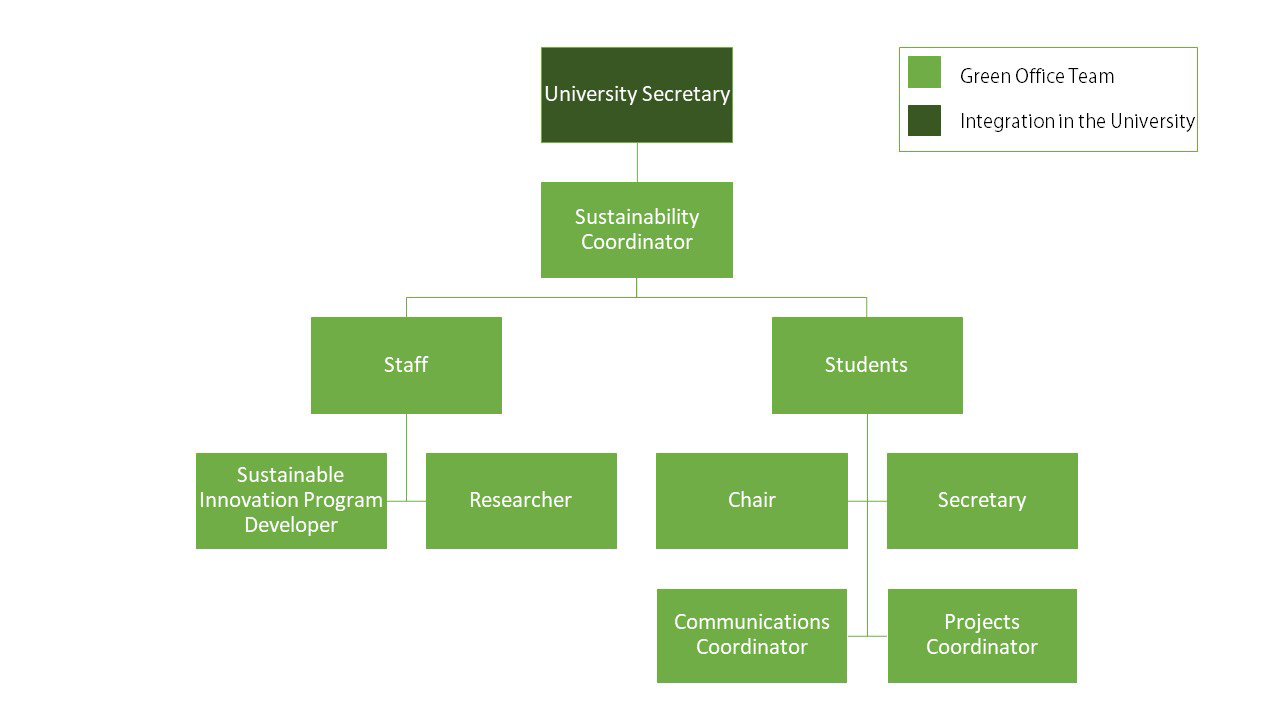
Option 3: separate student and staff teams
Some (student) Green Offices work in parallel to an existing staff sustainability team. The Green Office itself can then either be entirely student run or also include one or multiple staff members. Usually there is a staff coordinator of the Green Office team, who is also a member of the staff sustainability team and can thus provide a link between the two structures.
Benefits
- Can be set up easily: If there is already a staff sustainability team in place, it can often launch a small student Green Office using its own resources and without requiring approval from university management. This makes the process very easy. If you want a larger Green Office from the outset or after a few years of activity, you can then ask university management for more resources.
- Boosts student engagement and input: With a student team next to a staff team, the student team can put greater emphasis on community engagement – as they won’t need to deal with many of the policy issues that other Green Offices concern themselves with. Those are instead coordinated by the staff team. At the same time, the students can give input to those policies via the staff team.
Risks
- Unclear role division: If the student and staff team don’t get along, don’t communicate well or don’t agree on a clear role divison, you may end up with parallel structures. Even if you work together well, external stakeholders might be confused and not understand why there are two teams or who is responsible for what.
Our recommendation
This is a great way for universities to implement a larger sustainability programme. If you want to establish a large structure that deals with sustainability in all domains, this option can work for very well you! Alternatively you could create a joint student and staff team as described above.
Here are a few examples of Green Office teams that follow this approach (as of 2017):
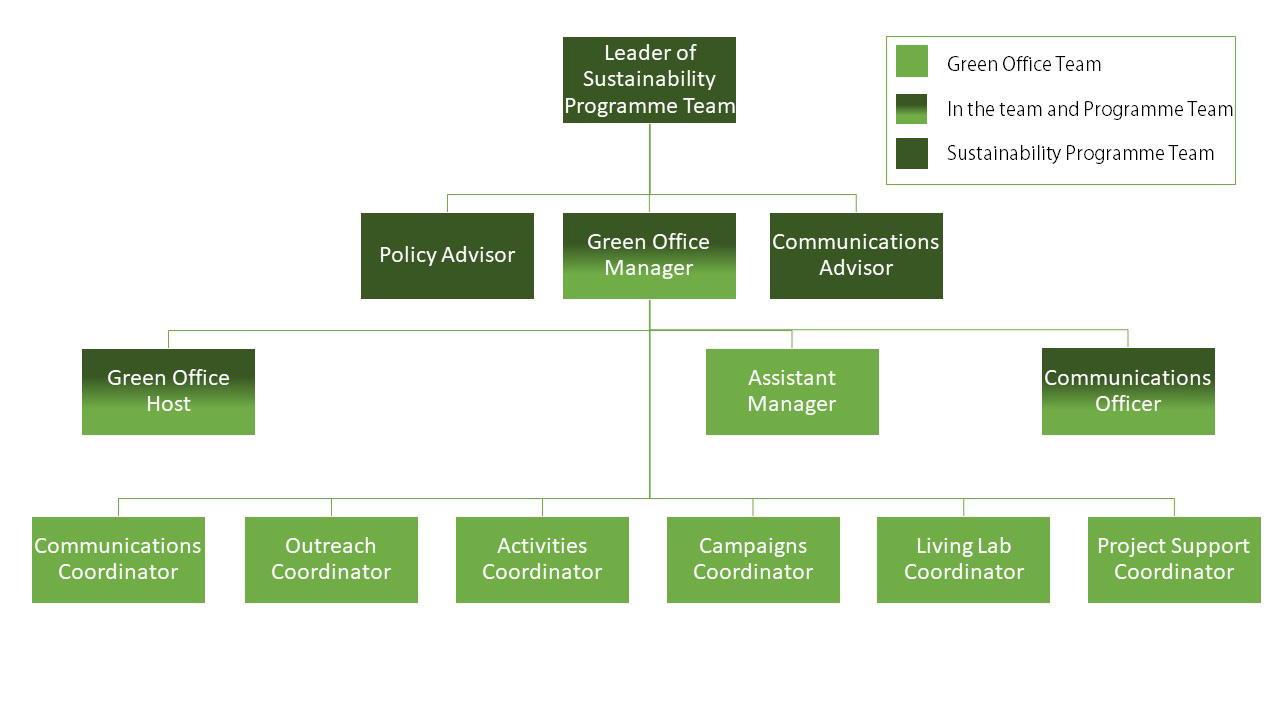
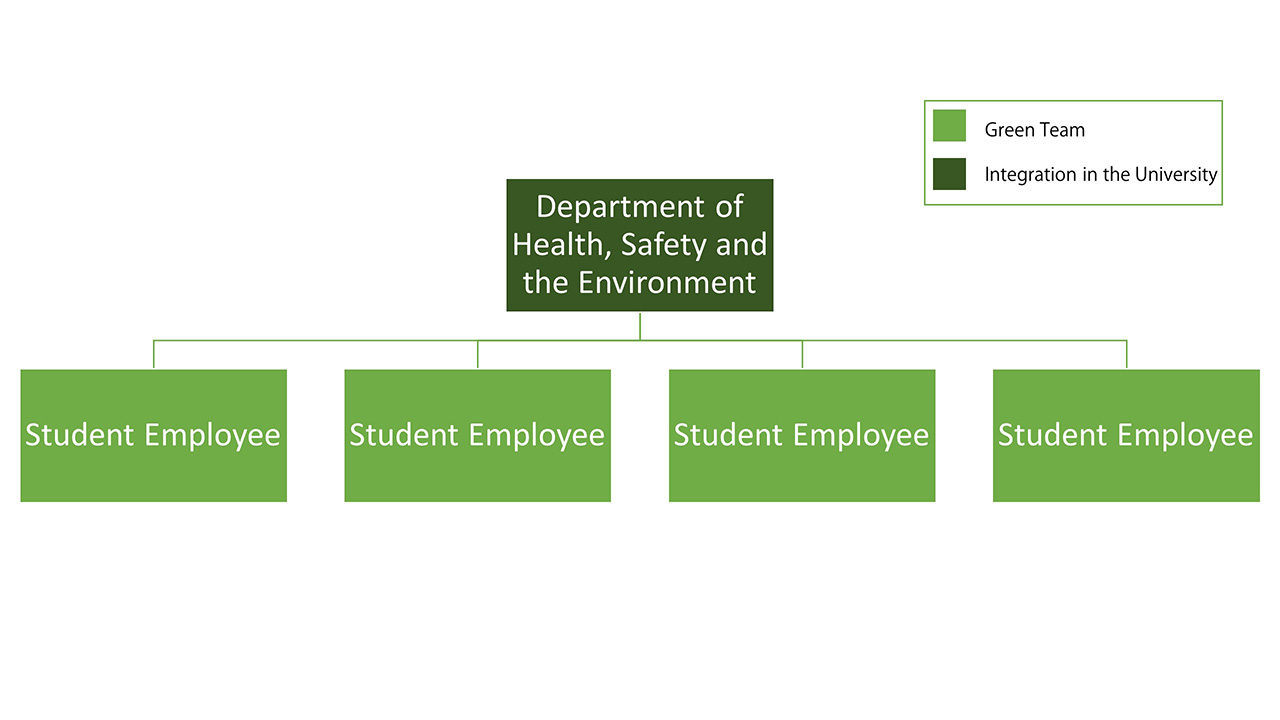
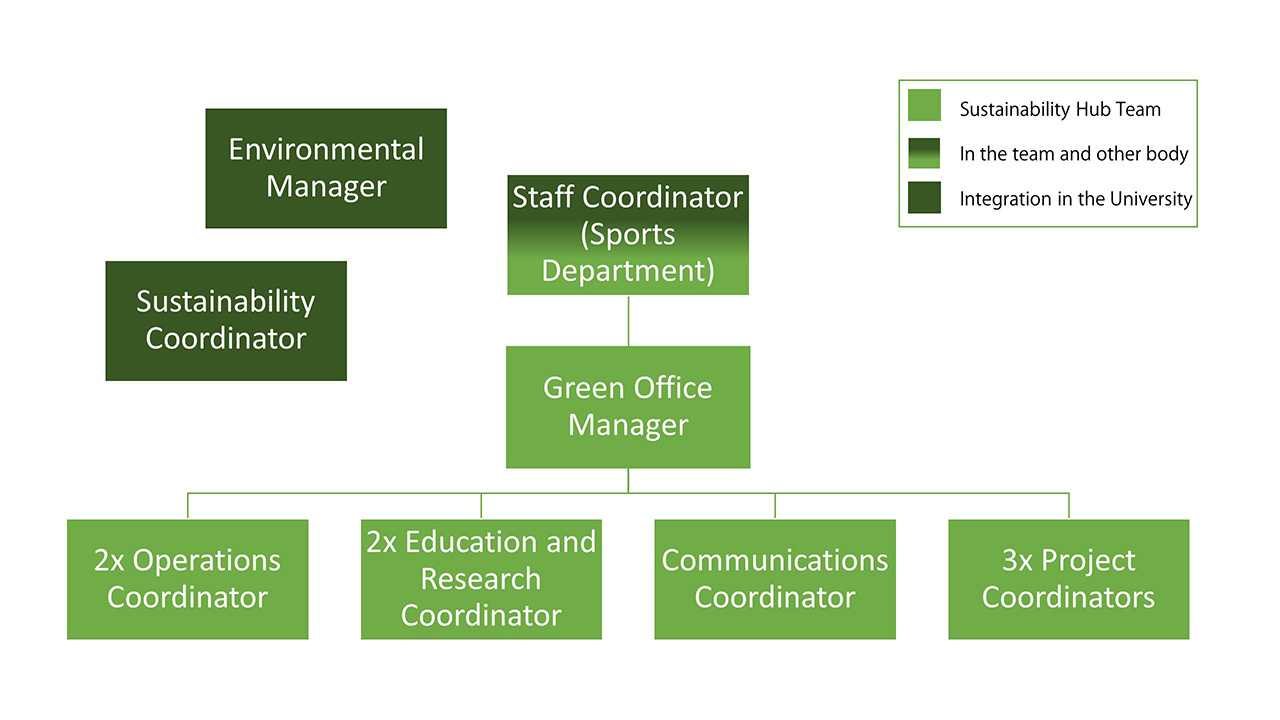
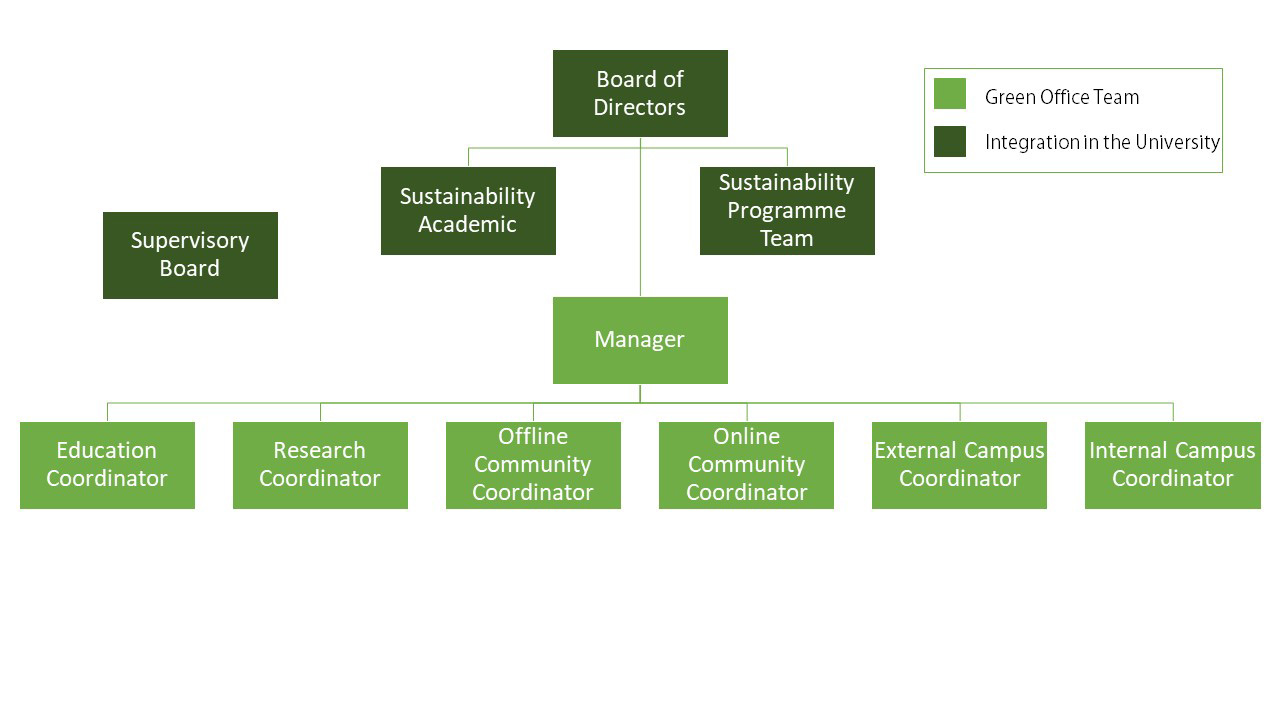
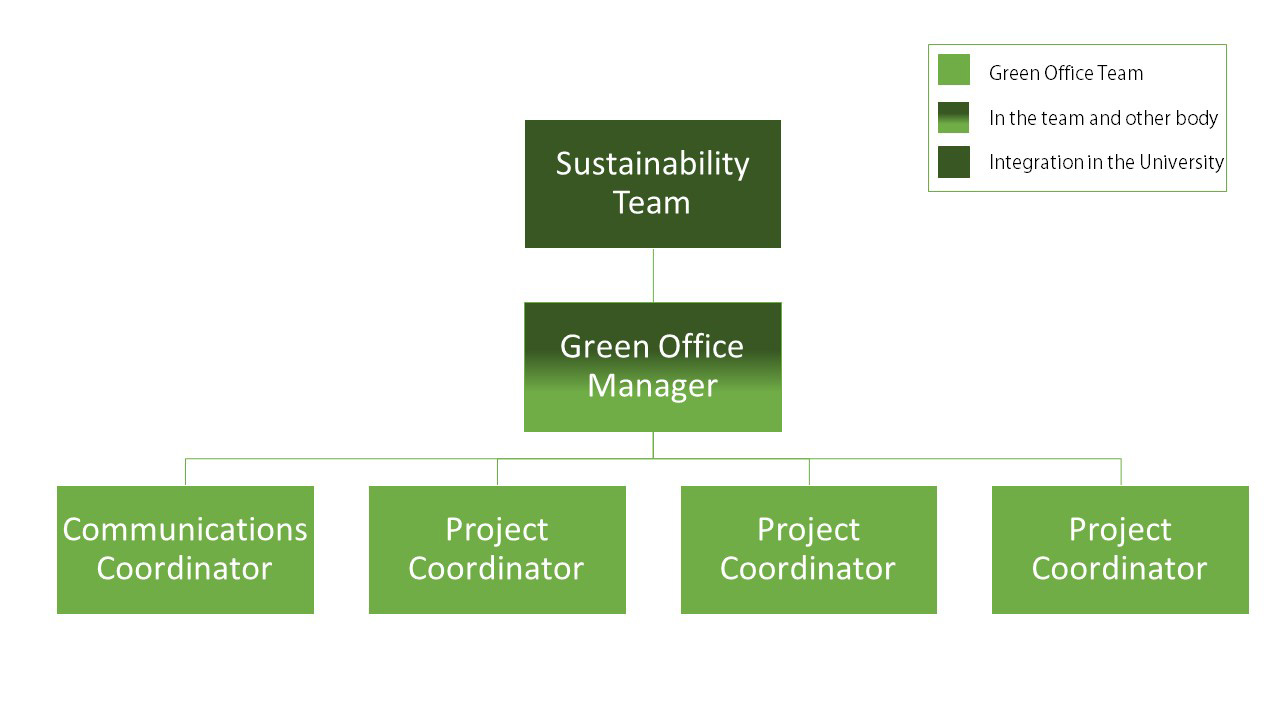
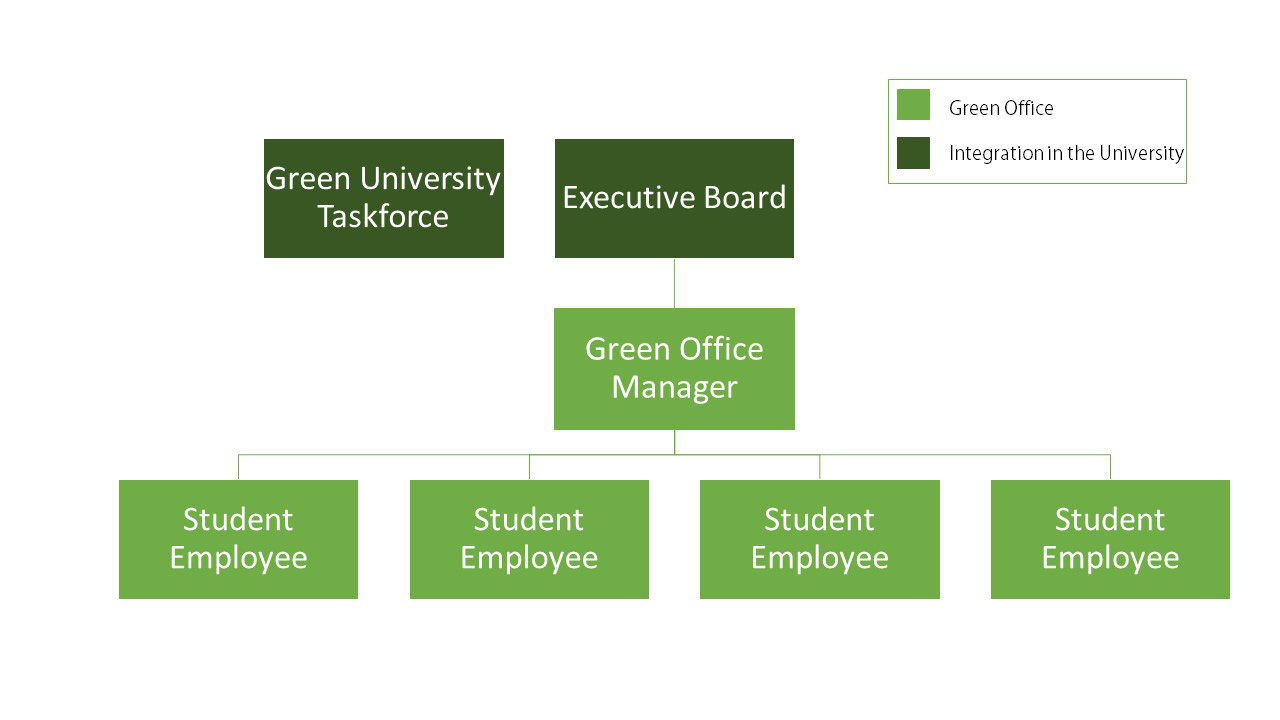
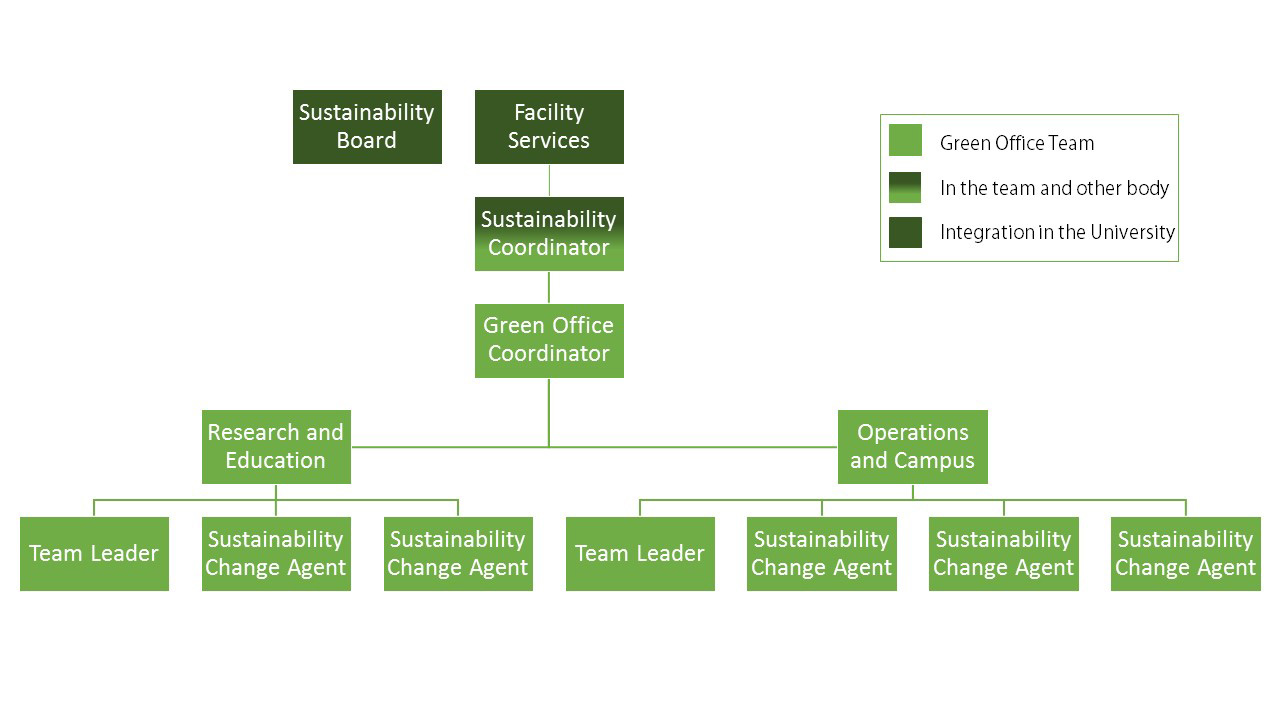
Engaging other students
Next to the student employees in the main Green Office team, Green Offices also engage students on a voluntary basis. While sometimes those students are casually involved in individual projects, they form an important part of the team structure in other Green Offices. In this section, you can find out about the 4 options that have developed over time, for engaging further students in the Green Office’s sustainability work.
Ad hoc volunteers
The most straightforward way of engaging student volunteers is to simply involve individual volunteers in individual projects. The projects are led by student employees in the team, who determine how many volunteers they need, as well as the direction of the project.
The advantage of this approach is that it can be implemented very easily and that that the student employee that is leading the project usually has more expertise and better connections within the university, to make the project a success. The downside is that student volunteers have little influence, that usually not very many volunteers are involved and that the total number of projects is limited.
Committees
Several Green Offices, including Utrecht, Amsterdam VU, Leuven and Leiden, have been very successful in creating a committee structure for their volunteers. The way it works is that students have to apply to become a “member of the Green Office”. If they are accepted, they then work in a committee that is responsible for one project. While one student employee supervises the committee, members largely organise themselves and make decisions democratically. The student employee supports the committee with resources, expertise and by helping them navigate the university structure.
The advantage of this approach is that it enables you to build a strong community of dozens of changemakers and allows you to implement many great community projects. However, it may be less suited for more implementing more structural changes in the university and requires a lot of work to set up and maintain.

Leiden University Green Office uses a committee structure for events, operations and media
Green teams or ambassadors
This approach is a variation of the committee structure. Instead of organising members by project, they are sorted by faculties. That way a Green Team is responsible for each faculty and can make awesome projects happen there. At the same time, the Green Office team still coordinates the Green Teams to provide for a university-wide perspective and coordination between the faculties. This approach can of course also be combined with project committees. It has been implemented quite successfully by Green Offices Delft and Groningen. The obvious advantage of this approach is that faculty-specific issues can be dealt with easily and that student volunteers are empowered to take a leading role within their own faculty. A challenge can be that without additional project groups, opportunities for cool university-wide projects might be missed, while a structure that is both faculty and project-based might be too complex to implement or manage.
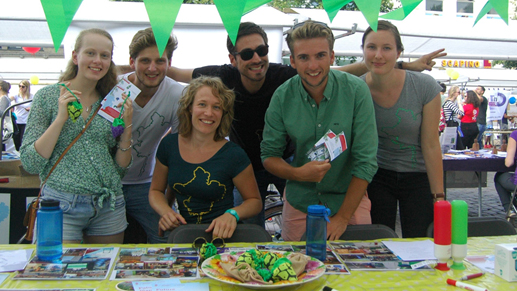
Green Office Groningen has ambassadors in each faculty
Living Lab
Regardless of how they otherwise manage volunteers, essentially every Green Office team runs some sort of living lab programme. The Green Office collects real-life sustainability challenges from within the university or the local community. They then coordinate with individual students or course coordinators to match the sustainability challenge with a student or group of students who will research the issue in their thesis or as part of their course work. Green Office Utrecht, for example, has established a really extensive programme to facilitate this kind of real-life research.
The great advantage of this approach is that students and teachers are anyways always looking for practicial research questions, while the stakeholder who encountered the sustainability challenge will be glad to receive free or very cheap advice. A challenge is that sometimes the research findings are too theoretical, as students try very hard to apply all academic theories that they were taught in order to get a good grade. To try to avoid this from happening, students are often asked to hand in a “product” (the advice they give to the “client”) and a separate academic paper. The risk still remains though, as students have a strong incentive to focus more on the academic findings.






